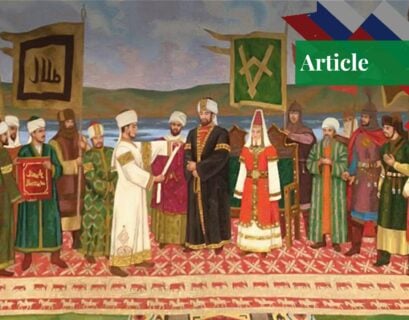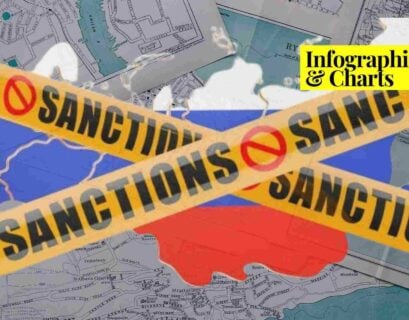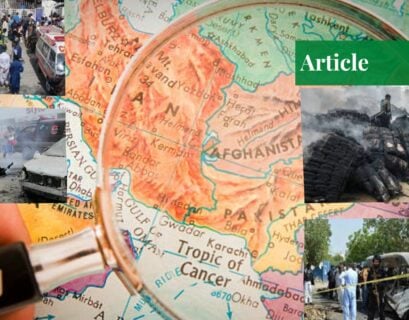Haider Ali Khan is doing his MPhil in International Relations at National Defence University.
The discovery of the Ural Mountains would have been a moment of jubilation and relief for the Russian czars, as Russia has always struggled with finding formidable natural barriers to protect its frontiers. Russia grew insecure due to its geography as it expanded its frontiers towards east and west in search of natural barriers to protect its territory from invading forces, and that insecurity became its greatest weakness and its greatest strength.
Owing to its flat landscape, Russia has always been prone to invasions from every side, and a lack of natural barriers, such as mountains or oceans, has rendered the Russian state vulnerable to invasions by the nomadic hordes from the east throughout its history. Moreover, the harsh climate entailing prolonged winters and a lingering fear of foreign invaders have developed a survival instinct in the Russian people. The society and history of Russia are, thus, a product of its geopolitics, and it continues to determine the destiny of the nation to this day and age.
The inaccessibility to warm waters in a massive land area renders Russia no choice but to become a sprawling land power. The same could be said about the Russian geography towards its west. If Helford Mackinder was alive today, he would not be surprised to see the developments that took place in eastern Europe in the aftermath of the Russian attack on Ukraine. Mackinder would have been proud of his assessment of the geopolitical insecurities of Russia that have led it to remain a belligerent power.
The great Russian steppe, which runs through the western parts of Russia and enters right into central Europe, can serve as a highway for a marching army, pillaging Russian lands way past its frontiers. The vast expanse of flat lands with no natural hindrances (except for the Carpathian Mountains towards the southwest) funnels from central Europe and expands through Ukraine into the vast steppe lands that have historically been a source of anxiety for the successive Russian empires.
These steppe lands were historically exploited by the invading nomadic tribes from the east that pillaged the European kingdoms and principalities ever since the times of the Roman empire. The Grand Principality of Muscovy bore the brunt of the atrocious raids by the Mongols of the Golden Horde in the thirteenth century which kept the Slavic principality from advancing like its other European counterparts.
Once again, the budding new empire was at odds with its geography. However, Russia, gradually mastering its geography, set out to convert its disadvantages into opportunities. The Romanov dynasty expanded the Russian empire beyond the Ural Mountains into the vast expanse of sparsely populated Siberia towards the east, reversing the historical tide of nomadic invasions coming to Europe.
Politics in peninsular Europe has always impacted Russian decision-making vis-a-vis its relations with the West. The emerging balance of power, with the advent of the nation-state system and a subsequent struggle for dominance in Europe, led to wars marring European history. Time and time again a revisionist power from continental Europe emerged and threatened the status quo, be it the Napoleonic France’s Grande Armée marching towards Moscow in the 19th century or the Third Reich’s Wehrmacht rumbling towards the Russian capital in the 20th century. All European powers followed the same path towards Russia.
Both Europe and Russia have eyed each other with considerable anxiety and suspicion. The Russian influence in eastern Europe and its proclivity to exert its influence in the Baltics, Central Europe and the surroundings of the Black Sea is a manifestation of Russian mentality due to its geopolitical predicament. Soon after the end of WWII, the world was divided between the Soviet bloc and the American bloc, and hence Europe was carved up into two spheres of influence.
The creation of NATO encouraged the Soviet Union to create a military alliance of its satellite states which culminated in the creation of the Warsaw Pact, containing states from eastern Europe and the Balkans. The threat of NATO remained ever-present as the Soviet Union began to fortify its frontiers in the west. Sir Winston Churchill famously quoted that “an iron curtain has descended across the continent” and the world remained under a lingering fear of the Cold War until the disintegration of the Soviet Union in 1991.
The breakup of the Soviet Union shattered the image of a buffer between the West and the Russian heartland as many of the former Soviet Republics gained independence including Ukraine. Once again, geopolitics was at play and the largest of the Soviet Republics, Russia, became the descendant of its Soviet past. Post-Soviet Russia was weak and descended into violence very quickly.
The allure of communism was gone to hold back such a vast expanse of land together, and geopolitics, which was always at the backdrop of the mindset of Russia, came back in full swing. Robert D. Kaplan in his book “The Revenge of Geography” argues that post-Soviet Russia was interested in the revival of the 19th-century doctrine of Eurasianism with Russia at the centre of a sprawling landmass that encompasses a huge part of the connected landmass of Europe and Asia.
However, many states, soon after the disintegration of the Soviet Union developed a sense of identity, and it would not be desirable for these states to replace their national identity with an abstract such as Eurasianism. States like Ukraine, Moldova, Lithuania, Latvia, and Estonia are prime examples. Moreover, the increasing encroachment by NATO and the EU closer to the Russian borders, with Ukraine being the latest in this development, has caused a great deal of concern for Russia.
Professor John J. Mearsheimer in his 2014 lecture at the University of Chicago explained how the Russian incursion and the eventual takeover of Crimea was the fault of the West. Mearsheimer argues that Western intervention in Ukraine comes in three forms: NATO expansion, EU expansion, and the Orange Revolutions (the promotion of democracy) in a region dominated by an autocratic Russia.
It is due to the utter disregard for Russian security by the West that the abomination of war and conflict has been brought to Ukraine. Russians were resolutely clear about the expansion of NATO towards its frontiers, and Putin was not willing to hold back in the case of Ukraine’s membership in NATO.
If you want to submit your articles and/or research papers, please check the Submissions page.
The views and opinions expressed in this article/paper are the author’s own and do not necessarily reflect the editorial position of Paradigm Shift.



















